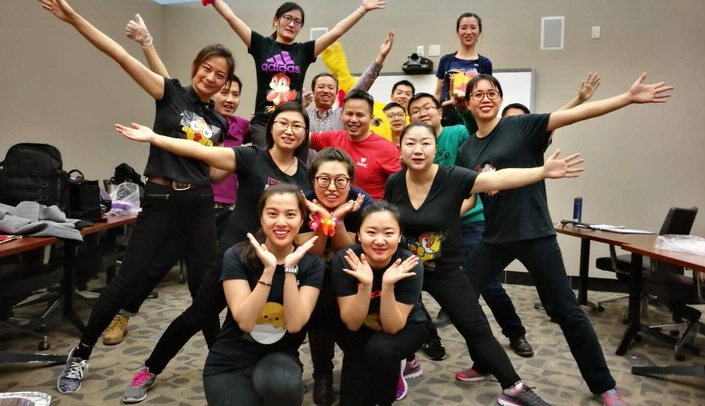On December 28, the fourth group of China Scholarship Council-sponsored faculty medical education trainees arrived to UNMC.
Their goal over the next six months is to study UNMC’s medical education system. This group includes eight faculty observing classes in the College of Medicine, four in the College of Pharmacy, and three in the College of Public Health.
Like previous faculty trainees, they hope to improve their teaching methods and also make connections with UNMC faculty.
Some of the faculty hope to learn how to improve their schools’ overall medical curriculum. Lijun LIN, an orthopedic instructor from Zhujiang Hospital of Southern Medical University, said, "I want to learn how to integrate the curriculum better and how to arrange subjects in the same course."
Some hoped to learn better course design. "I hope to make changes to my syllabi, and enhance student-centered learning in my courses" said Dongsheng RUI, an Epidemiologist from the Medical School of Shihezi University. Yafei ZHU, an OBGYN instructor from Gannan Medical University, said that he is excited to see "how courses here are properly designed and integrated for medical students’ future careers and how students study for these courses." Huan DING, an instructor in Critical Care from Ningxia Medical University, said that she hopes to improve her "curriculum, teaching skills and tools, and clarify her course objectives."
Others commented on the College of Medicine’s Integrated Clinical Experience (ICE). "ICE has been used at UNMC for almost 18 years," said Lijun, "it is a very effective way to teach medical students." Xiaoying ZHU, a biochemistry instructor from Youjing Medical University for Nationalities, said, "at UNMC the curriculum design, content, and lectures are all closely related to clinical practice, which helps the students achieve learning outcomes."
For Wei GUO, a pharmacy instructor at Tibet University, "the biggest surprise has been the lab – it is not a traditional lab for doing experiments. Instead, students use computers to see histological slides, and every slide is clearly illustrated. This is useful for teaching, I think. At my university, we usually use real slides and microscopes, so we have to waste class time explaining what, where, and how to each student."
Many commented on the differences between UNMC and their home institutions. "At UNMC, students are more active, using their own tablets to learn and take quizzes. In our classrooms, the students usually just listen and read the PowerPoint slides," Wei said. Lijun agreed, saying "UNMC students will stop a teacher to ask questions. I hope to encourage this with our students at home."
This group of trainees comes from 13 different universities in 13 different provinces throughout China. With that diversity, each trainee wanted to share some things that made his or her universities or home provinces unique. Xiaoying said, "most of our students are ethnic minorities. When they graduate, most of them will return to their home towns to work." Wei said, "I come from Tibet University. It is one of the highest universities in the world, located at over 12,000 feet above sea level. Our specialty is high altitude medicine, and our city Lhasa is like a big natural lab for researching altitude sickness." Lijun said, "my province, Guangdong, was one of the first open provinces in China, so it had many international ties. Despite this, only a few people from outside China travel there now. If I have a chance, I’d like to introduce it to you."
